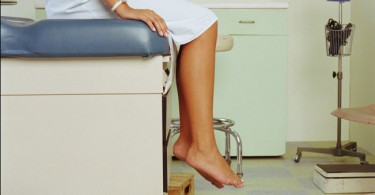
Advertisements
It’s worshipped in some cultures, taboo in others, but ultimately, the vagina is an amazingly versatile muscular tube with a variety of functions: birth canal, outflow track for menstrual blood, in-flow track for sperm (this list is in random order). Childbirth, gravity, menopause, smoking and obesity can all wreak havoc on the vagina and, over time, can weaken the muscles of the pelvic floor (a hammock of muscles that connect from your back to your lower abs).
Here are a few signs that your pelvic floor and vaginal muscles may be weak:
- Leaking urine when you cough or sneeze
- Passing gas unintentionally
- A vaginal bulge
- A constant pressure sensation in your pelvis
- Difficulty emptying your bladder
The good news is that, like other muscles in your body, your pelvic floor and vaginal muscles can be strengthened with exercise (losing weight and stopping smoking can also help). Exercises that focus on your core muscles – like planks, squats, sit ups and lunges – engage your pelvic floor, so provide some benefit. But the most effective way to get your vagina and pelvic floor back in shape is by exercising the pelvic floor muscles themselves with Kegel exercises.
Kegels aren’t really that difficult, but the biggest problem I see with my patients is that most women haven’t learned how to do them properly. Often during exams when I ask them to Kegel, they will bear down or clench their inner thigh muscles instead. The best way to isolate the proper pelvic muscles is to Kegel while you are urinating. Start to pee, then stop and hold the urine in for 10 seconds. The muscles that you use to hold in your urine are your pelvic floor muscles. Once you have learned the proper muscles to contract, you can begin doing the Kegels throughout the day. The goal is to do 50 Kegel contractions (holding for 10 seconds each) throughout the day.
Advertisements
They can be done discreetly anywhere, so you can Kegel at your convenience. If you have a long commute, you might try doing yours at stop lights. Watching TV or checking social media might be another good opportunity to multitask your Kegels. And if you get bored with ordinary Kegels, you may want to take things up a notch with this device, which I wish I had invented: a Kegel video game.
You should see some improvement in your muscular tone within 6 weeks, although recovery after a vaginal birth can take up to 3 months. If you are still having difficulties with your pelvic floor after regular Kegels, then talk to your provider about a referral to a physical therapist. When I talk to my patients about getting physical therapy on their vagina they usually look at me like I’m insane. I’m sure they picture themselves in a giant therapy room working out with tiny vagina dumbbells. However, pelvic physical therapists are specially trained to work with the pelvic floor in a discreet separate room (with no tiny dumbbells), and almost every patient I’ve sent to pelvic PT has had superb results.
You may be wondering how a stronger vagina might affect your sex life. From a physiological standpoint, it makes sense that regular Kegels would help the average woman to improve her sexual response by improving blood flow and becoming more in tune with her body. In terms of actual research on the subject, though, there are surprisingly few articles on Kegels and general sexual health in women. There are few small studies that have looked at women’s sexual function after undergoing pelvic physical therapy for incontinence and prolapse, and these found that after completing pelvic PT women noted improved libido and ability to achieve orgasm. There is also good deal of data showing that pelvic PT is very helpful for women who experience painful intercourse.
If you’re experiencing symptoms of a weak pelvic floor, start incorporating Kegels into your daily routine. If after a few weeks of Kegeling you are not seeing results, talk to your provider about other possible causes of pelvic floor dysfunction or ask for a referral to a pelvic physical therapist. And if you do find one with tiny vagina dumbbells, let me know.
by Heather Rupe, DOBoard-certified OB/GYN



Comments